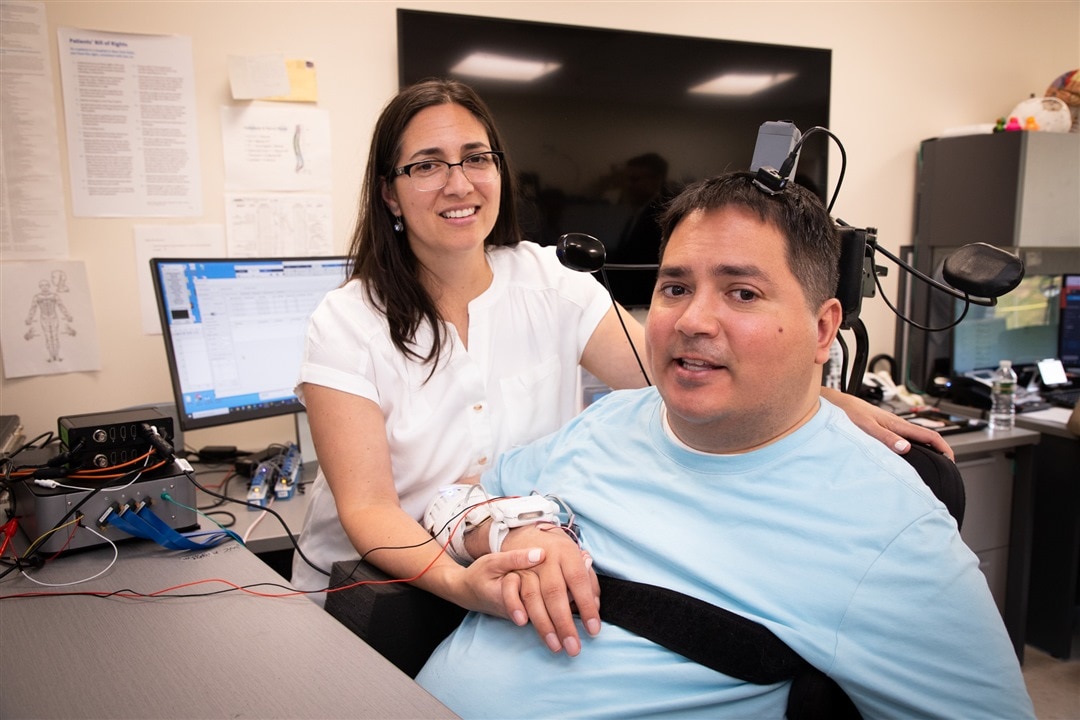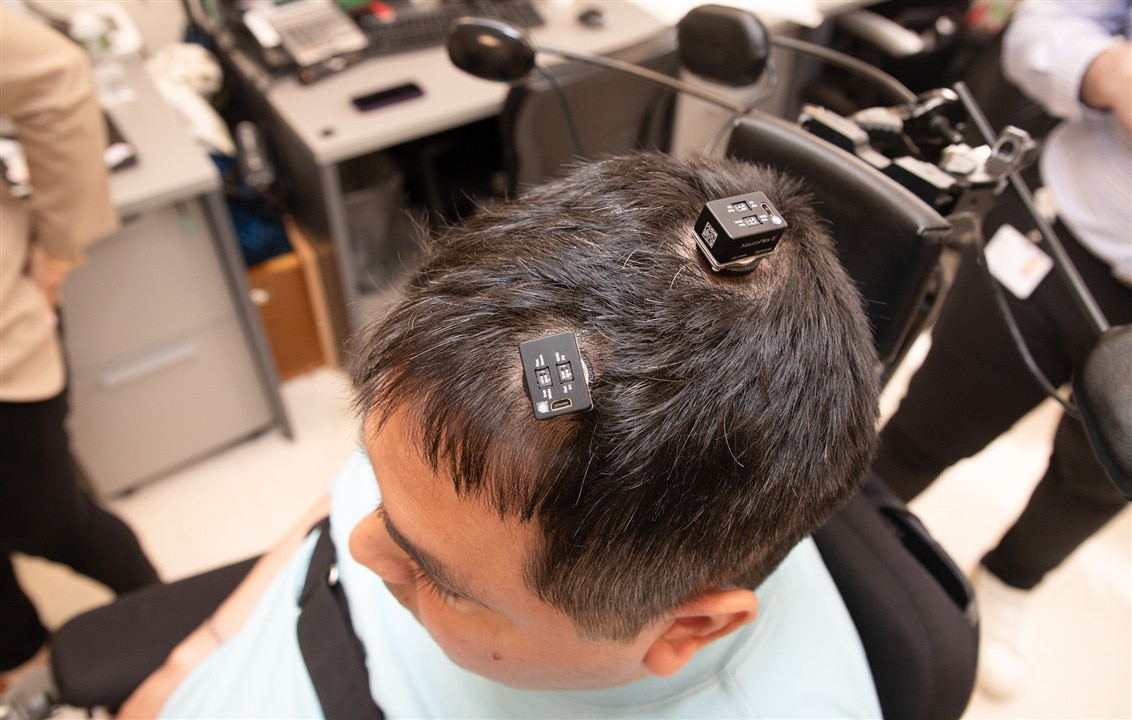
Keith Thomas felt his sister’s hand as she held it for support. He suffered a spinal injury in 2020 that left him paralyzed from the chest down. (Image Credit: Feinstein Institutes for Medical Research Northwell Health)
Three years ago, Keith Thomas sustained a spinal injury from a diving accident that paralyzed him from the chest down. Thanks to a successful double neural bypass surgery in 2021 performed by researchers at Northwell Health’s Feinstein Institutes for Medical Research, Thomas has regained feeling and movement in his right hand. A double neural bypass involves using AI algorithms to form an electronic bridge so that information can pass between the brain and the body. Doing so effectively restores feeling and movement in his hands while providing permanent gains.
The team implanted five AI-powered electrode arrays in specific areas of Thomas’ brain that control motion and feeling in his right hand. And during the 15-hour procedure, Thomas started to feel his right fingers for the first time since he became paralyzed.
“This is the first time the brain, body and spinal cord have been linked together electronically in a paralyzed human to restore lasting movement and sensation,” said Chad Bouton, professor in the Institute of Bioelectronic Medicine at the Feinstein Institutes, vice president of advanced engineering at Northwell Health, developer of the technology and principal investigator of the clinical trial. “When the study participant thinks about moving his arm or hand, we ‘supercharge’ his spinal cord and stimulate his brain and muscles to help rebuild connections, provide sensory feedback, and promote recovery. This type of thought-driven therapy is a game-changer. Our goal is to use this technology one day to give people living with paralysis the ability to live fuller, more independent lives.”

Thomas regained feeling and movement in his right arm thanks to the AI-driven implants that translate his thoughts into action. (Image Credit: Feinstein Institutes for Medical Research Northwell Health)
Additionally, the team placed two external ports atop his head, and each one is powered by an AI algorithm for thought-driven therapy. That way, it can translate his thoughts, like squeezing a hand, into actions. For this to work, the algorithm reads his brain input via the implants before converting it into signals that pass through flexible electrodes on his arm and spine to stimulate movement and recovery. Then, sensors on his fingertips and palm transmit touch and pressure data to his brain’s sensory region, helping restore sensation.
Thomas’ condition improved, moving/feeling his right wrist and arm four months after the procedure, especially with the equipment turned off. He can even feel his sister’s touch while she holds his hand for support. Some of the damage from his accident may be reversible for good through this new method. Patients dealing with spinal cord injuries could benefit from this technology and similar types.
Have a story tip? Message me at: http://twitter.com/Cabe_Atwell

-

Soura_123
-
Cancel
-
Vote Up
0
Vote Down
-
-
Sign in to reply
-
More
-
Cancel
Comment-

Soura_123
-
Cancel
-
Vote Up
0
Vote Down
-
-
Sign in to reply
-
More
-
Cancel
Children